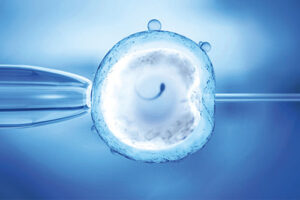Assisted Hatching
Treatments in assisted reproduction in Mexico.This technique complements In Vitro Fertilization and is done before the embryo transfer. The procedure consists in creating a small hole in the protein layer surrounding the embryo, known as the pellucid zone, to facilitate detachment and implantation in the maternal uterus.

When is done the assisted hatching?
The main function of the pellucid zone is protect the egg and the embryo as it travels through the fallopian tubes until it reaches the uterus, allowing the embryo to keep its cells together during its development when it is still weak.
When fertilization takes place, the embryo's cover must be released and allow implantation to occur in the mother's womb. But as the age of a woman advances, it causes the zona pellucida to harden and prevent the embryo from being released from the cover, when this happens, assisted hatching must be performed.
When is this technique used?
- Women over 37 years old: the ovule in this case has difficulty getting rid of the zona pellucida.
- Transfer of embryos that have been previously thawed.
- Repeated IVF cycles without positive results.
- High percentage of fragments in the embryo.
- Oocytes with thickened pellucid zone greater than 15 μm.

